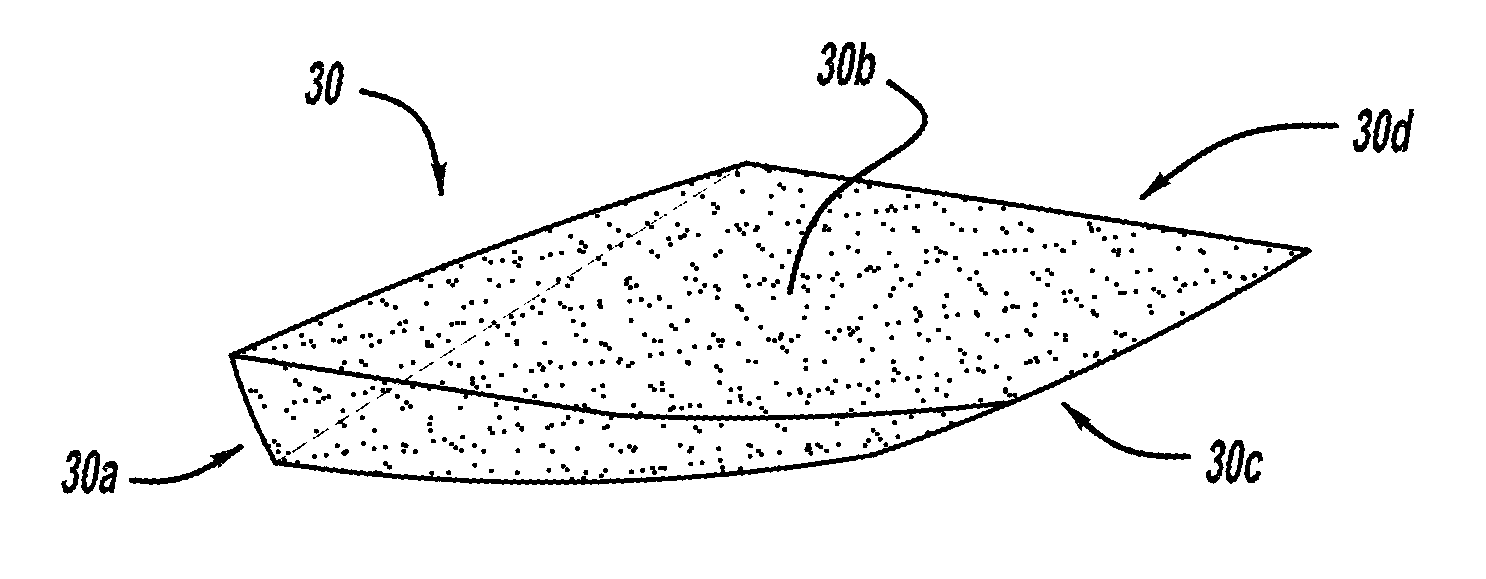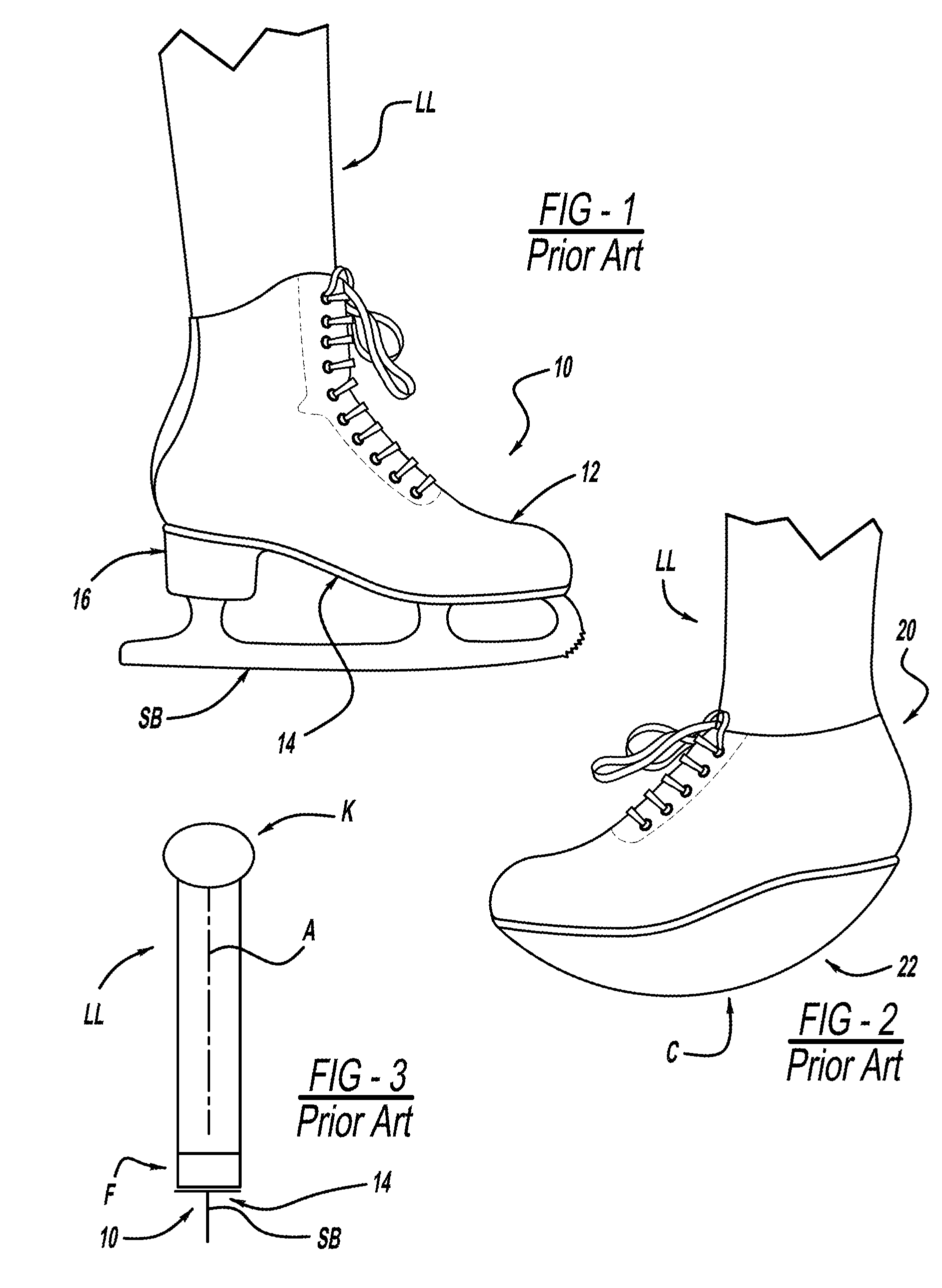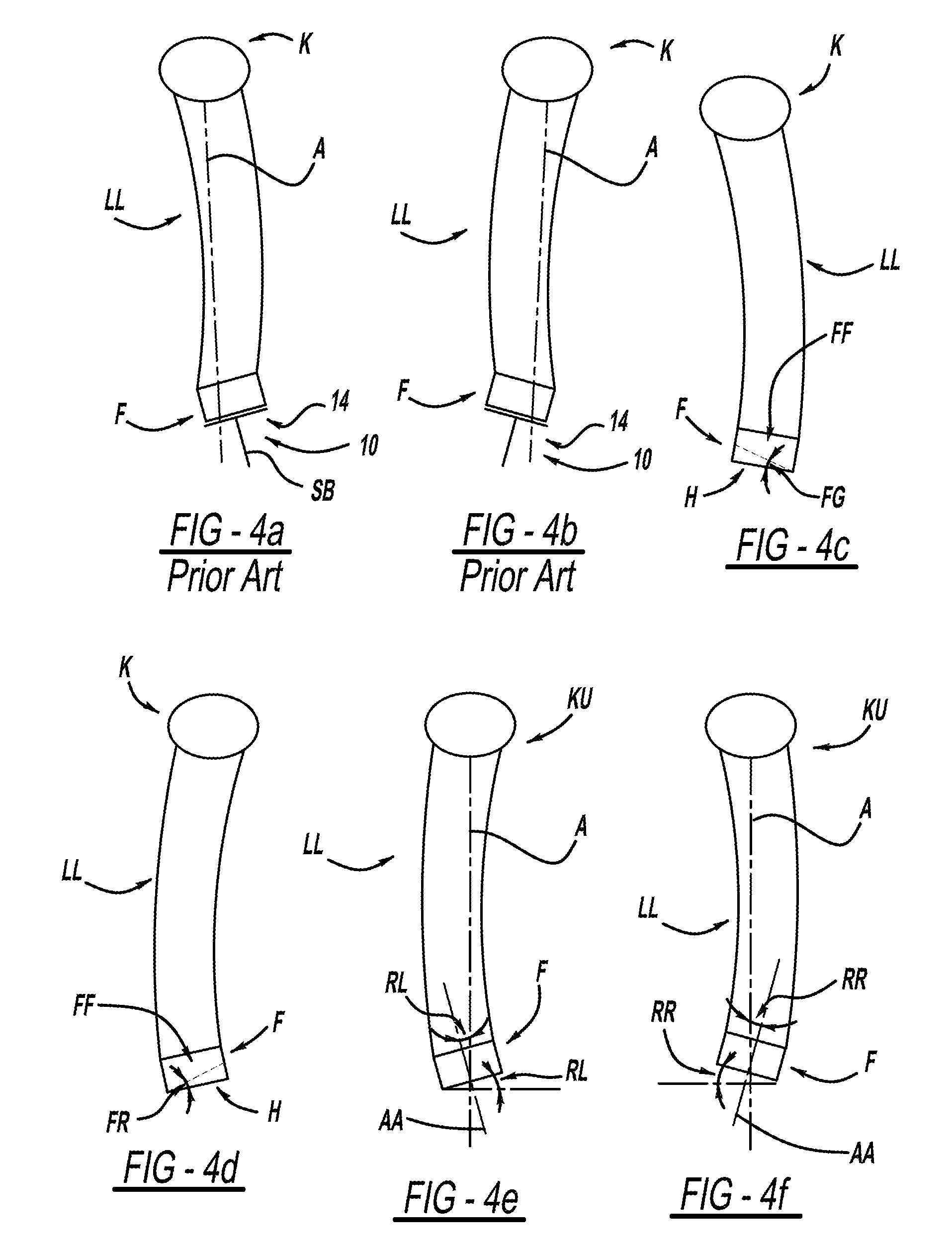Forefoot wedge insert for footwear
a technology for inserts and footwear, applied in the field of inserts for footwear, can solve the problems of virtually impossible for the wearer to consistently and constantly maintain a subtalar neutral position, neither pronating or supinating, and the performance of skating performance would be expected to suffer significantly. achieve the effect of adequate balan
- Summary
- Abstract
- Description
- Claims
- Application Information
AI Technical Summary
Benefits of technology
Problems solved by technology
Method used
Image
Examples
Embodiment Construction
[0035]The following description of the preferred embodiment(s) is merely exemplary in nature and is in no way intended to limit the invention, or uses.
[0036]Referring generally to FIGS. 4c-10, a new and improved forefoot wedge insert 30 is provided for a piece of footwear 32, e.g., a boot, such as, but not limited to ice skating boots, or a shoe, such as, but not limited to exercise, therapeutic, or physiological footwear. The forefoot wedge insert 30 can be formed of any formable or moldable material that is substantially firm, yet comfortable, when formed, molded, cured or dried. The formable or moldable material can be used to uplift the forefoot area 36 of the wearer's foot 38 to cause the subtalar joint of the wearer to assume and / or maintain a neutral position (or as close to neutral as possible). By way of a non-limiting example, the vertical leg / foot arrangement is being “shimmed level” to the boot or shoe bottom medially / laterally (as the case may require) in the neutral po...
PUM
 Login to View More
Login to View More Abstract
Description
Claims
Application Information
 Login to View More
Login to View More - R&D
- Intellectual Property
- Life Sciences
- Materials
- Tech Scout
- Unparalleled Data Quality
- Higher Quality Content
- 60% Fewer Hallucinations
Browse by: Latest US Patents, China's latest patents, Technical Efficacy Thesaurus, Application Domain, Technology Topic, Popular Technical Reports.
© 2025 PatSnap. All rights reserved.Legal|Privacy policy|Modern Slavery Act Transparency Statement|Sitemap|About US| Contact US: help@patsnap.com



